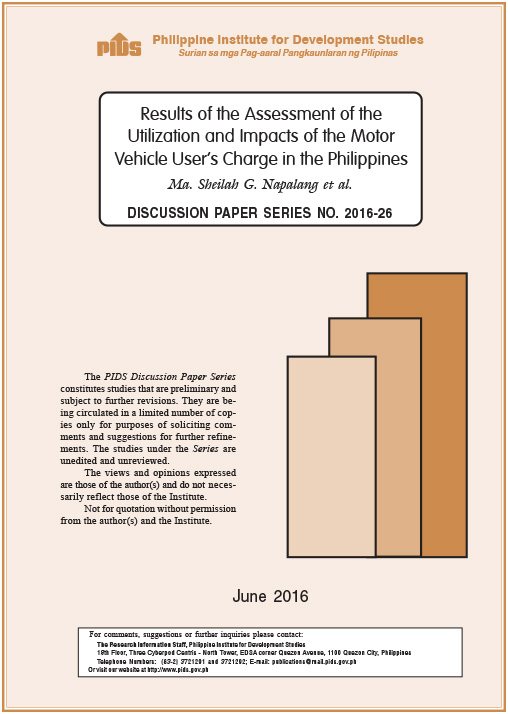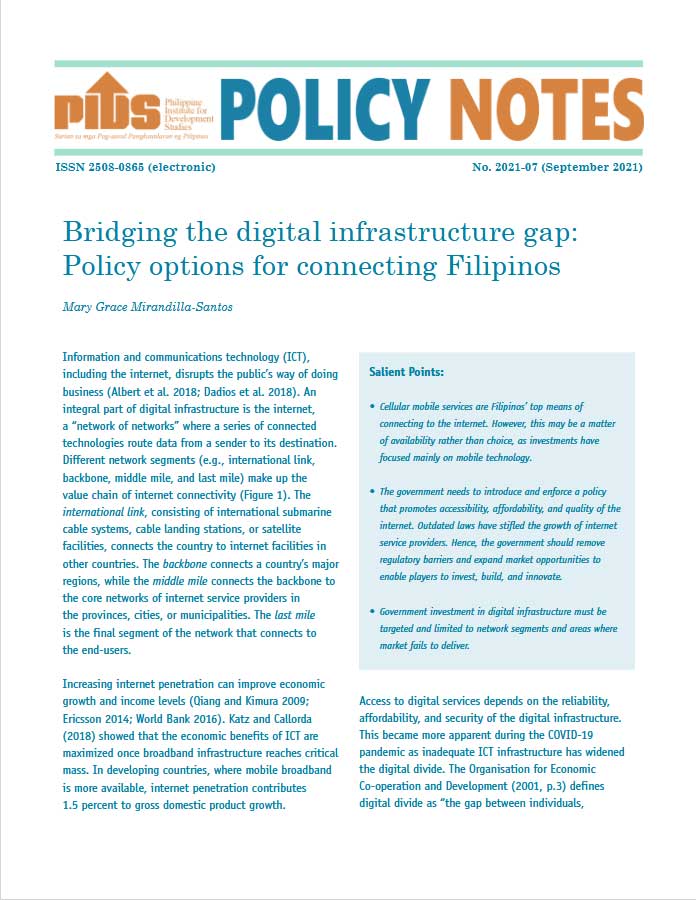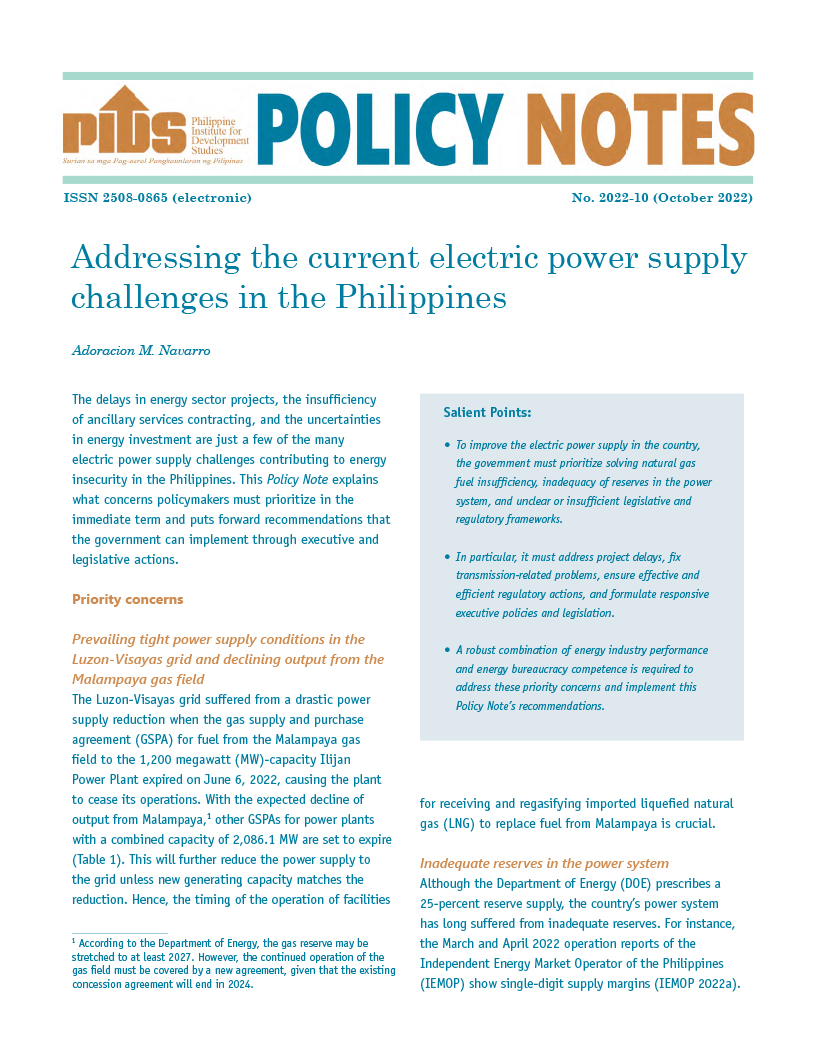Road funds like the Motor Vehicle User's Charge (MVUC) Fund in the Philippines are a kind of earmarked funds. Though without shortcomings, earmarking funds through the MVUC continues to be relevant as it is able to ensure a stable flow of resources for public road expenditures. The study identifies the shortcomings and areas for improvement. In assessing the different stages of the MVUC process, the study finds that transparency and efficiency in collection have to be improved through automation and accurate recording. It also finds that project identification and investment programming need to adhere to the recommended procedures in the operating manual. As there are indications of fund underutilization, the study recommends accelerating the utilization of funds through advanced project development and investment programming.
After examining five MVUC-funded projects, the authors find that an impact monitoring system is present in only one case that is recently finished, and the sparse data available are not enough to quantitatively establish impacts. Nevertheless, findings from field visits and interviews with beneficiaries reveal that there are positive benefits from the MVUC mechanism. An examination of successful cases in other countries also reveals good practices that are worth looking into, such as ensuring that the road fund administrator is strictly an administrator rather than project implementer, advanced preparation of long-term vision and medium- to short-term road investment programs, and variations of the reimbursement-basis payment system that is supported by strong audit systems.













